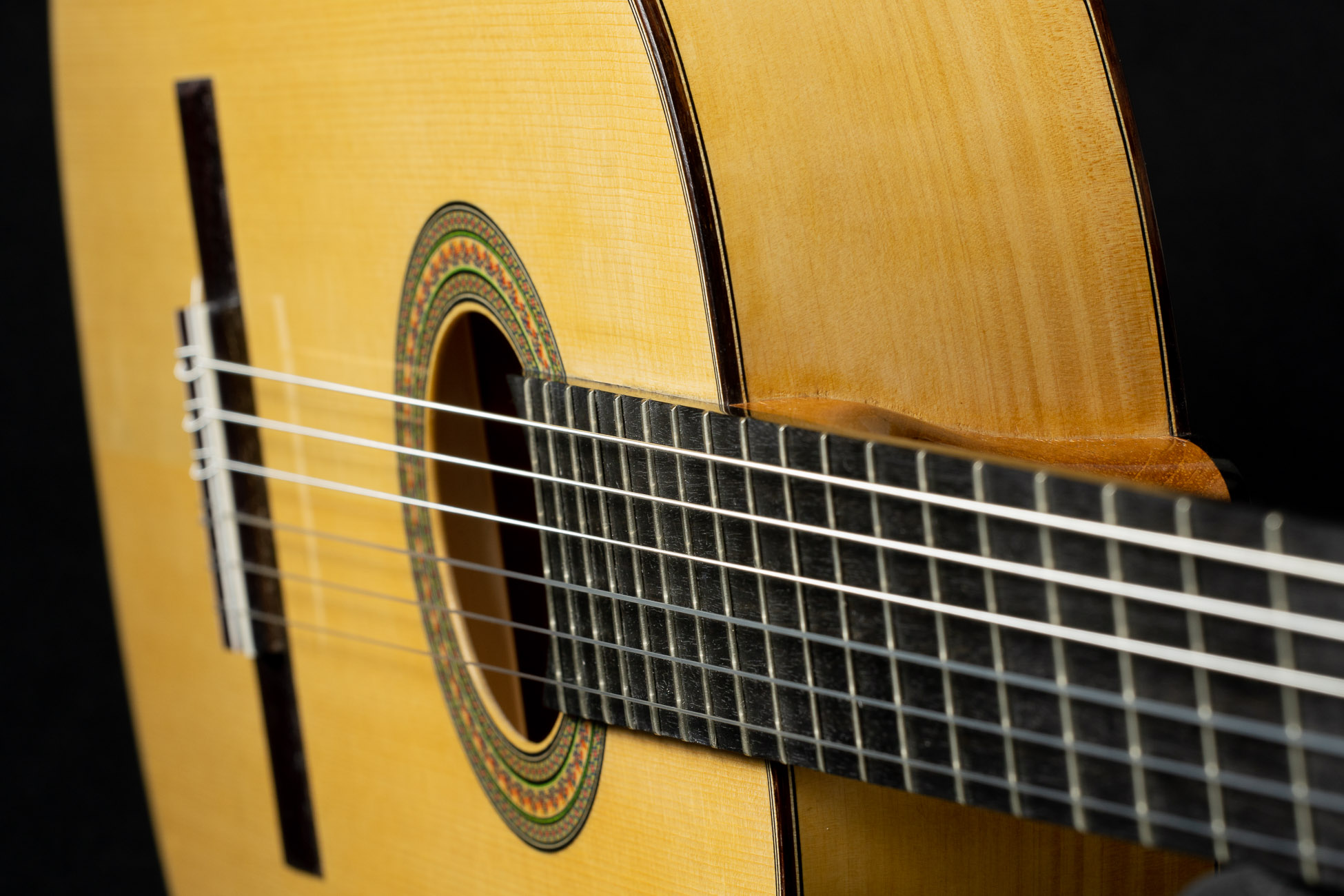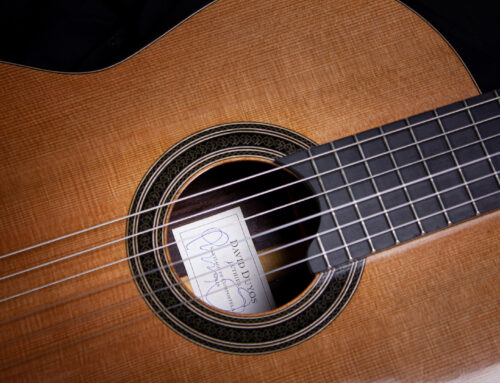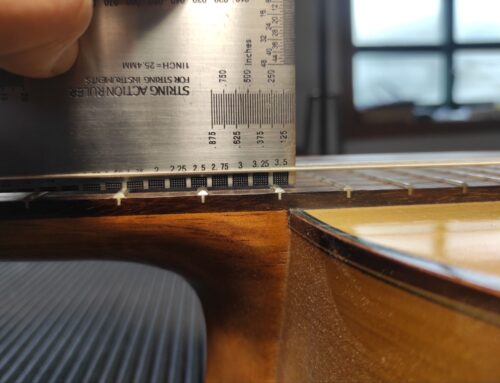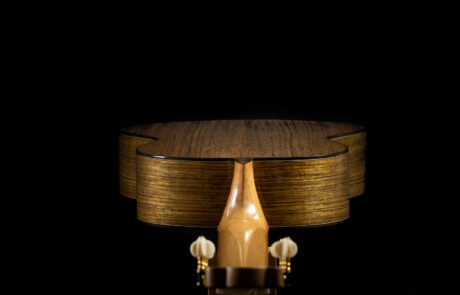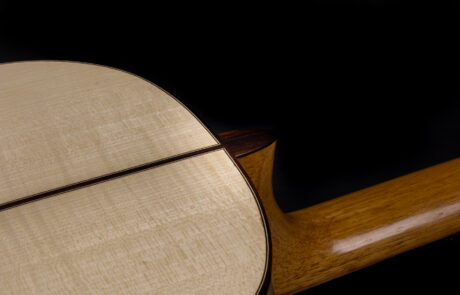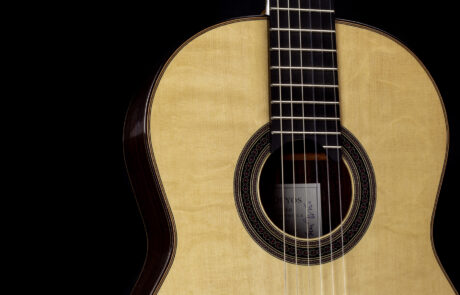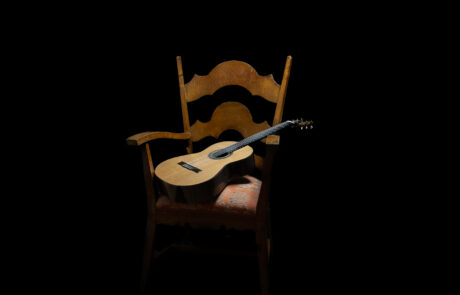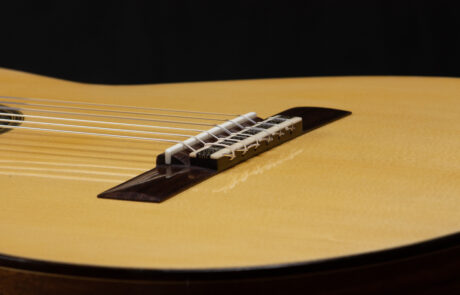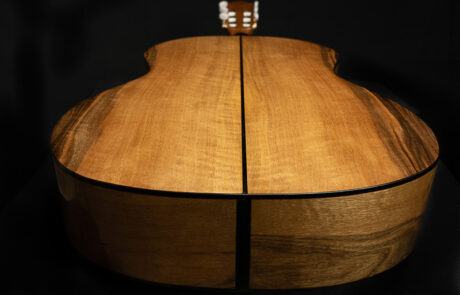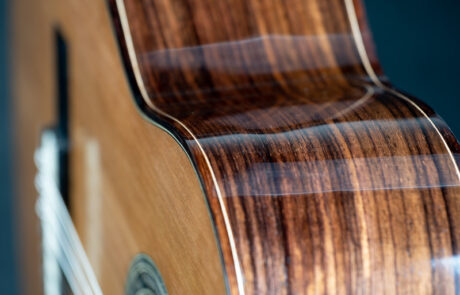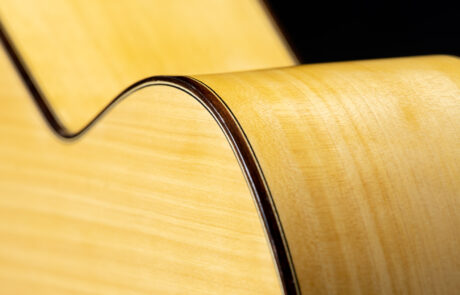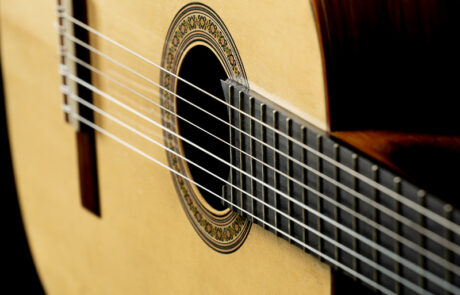Contents on this post
Many customers ask me what is the correct string height on a classical guitar. String height is also called action. In this post I will try to solve this eternal question. I already anticipate that the topic does not have a unique answer, although I will try to explain some margins in which the string height should be comfortable to be able to play.
How to measure the string height?
Before getting into the subject, I find it useful to give an explanation of how to measure string height. It is a fairly simple task, just using a conventional measuring ruler where the zero point is right at the end. I leave you a link to one that you can buy on Amazon.
If you are very interested, there are also rulers like this one, specifically for measuring the height of strings. It is not essential, but it can be useful if you want to measure the action more accurately.

The action is always measured at 12th. fret
Once you have your ruler, place it perpendicular to the fretboard, resting on the 12th fret. The distance between the fret and the bottom of the string will give you the action you have on the guitar. Take the measurement on the 1st and 6th strings.
The correct string height
Now that we are clear on how to measure the height, it should be made clear that there is no one correct height. It depends on your playing style and the repertoire you play with that guitar. What I do dare to do is to give you some safety margins in which the guitar will be playable. Here is a table with approximate figures in millimeters, depending on the way you play and the style:
| Playing style / Repertoire | Flamenco | Classical | Contemporary classical |
|---|---|---|---|
| Soft | 2-2,5 mm | 2,5-3,2 mm | 2,7-3,5 mm |
| Aggresive | 2,3-2,7 mm | 2,7-3,8 mm | 3-4,5 mm |
I have obtained these data after analyzing many guitars and many guitarists. As you can see, for flamenco, the tendency is to use a lower action. This makes sense if we consider that this is a style with a great preponderance of rhythm and speed, in which fret buzzing are not very critical, and are even intentionally sought as a stylistic resource. The abundance of energetic strumming also means that the players tend to take the instrument to its maximum volume capacity, to the point where it is said that the sound "breaks", basically because the guitar can't take any more. And this is a good thing in flamenco.
On the other hand, in more classical styles, the guitar is intended to have a greater sound projection, being practically "forbidden" fretting, and that "broken" sound that is so much liked in flamenco is not even thought of when playing Tárrega or Bach. To achieve this pure and clear sound, a higher action helps, which favors the guitar to have more volume without the sound getting "dirty". Keep in mind that the way of playing in classical —in practically all the interpretative resources that exist—, tends to imply that the interpreter plays softer. It seems to me that comparing any flamenco strumming to most classical techniques makes this difference in playing obvious.
I have made a distinction for the more contemporary classical repertoire, which has somehow been mixed in many occasions with rhythmic and expressive resources brought from both avant-garde and popular music, and which sometimes might require a lower string height.
Also, as you can see, the playing style of each performer is considered in the table. There are people who tend to play more aggressively, for whom a higher action should be a help to avoid overdriving. People who have tried my guitars often say that they are comfortable. For me it is a must that they are comfortable, because there is no point in having a good sound if the instrument is not easy to play.
For me it is a must that the guitars are comfortable, because there is no point in having a good sound if the instrument cannot be played easily.
Personally I try to achieve that comfort in the left hand through an action that goes from 2.5 mm on the first string to a maximum of 3.8 mm on the sixth string. It also helps comfort not to make the neck too thick, but I'll leave that for another post perhaps.
There are exceptional guitarists who need exceptional guitars.
I like the term "exceptional". Normally in Spanish we associate it with things that are very good. But if we look slowly, the word "exceptional" refers to the fact that there is an exception. That is, that there is something that is out of the ordinary. It is therefore scarce, rare or difficult to find.
Well, in the guitar world you end up meeting people who are out of the ordinary. In my wanderings to show my work at guitar festivals such as the Iserlohn Guitar Festival, I remember once I took several guitars to show them. Half of humanity passed by, so to speak. Nobody was fiddling with my guitars, and in general people appreciated the comfort of my instruments. But a guy showed up and they fretted all of them. The guy played very well, but his way of attacking the strings was so aggressive that he needed a super high action for the guitar not to fret him.
That guy left with an air of "I can't buy one of your poorly made guitars", and I admit that at first I beat my chest thinking that the guitar was indeed defective, but then I thought: "hell, if so many people have tried it and not fretted him, I think the problem is not with the guitar, but with this guy's playing, right?".
This story is to make it clear that every guitarist is different. That no matter how many guideline charts I have given, they may be useless if we find instrumentalists who have a style that makes it necessary for the luthier to make something non-standard for them.
Anyway, I hope you found this post interesting. I leave here a link to another post where I explain how to adjust the height of the strings in case it is necessary.

